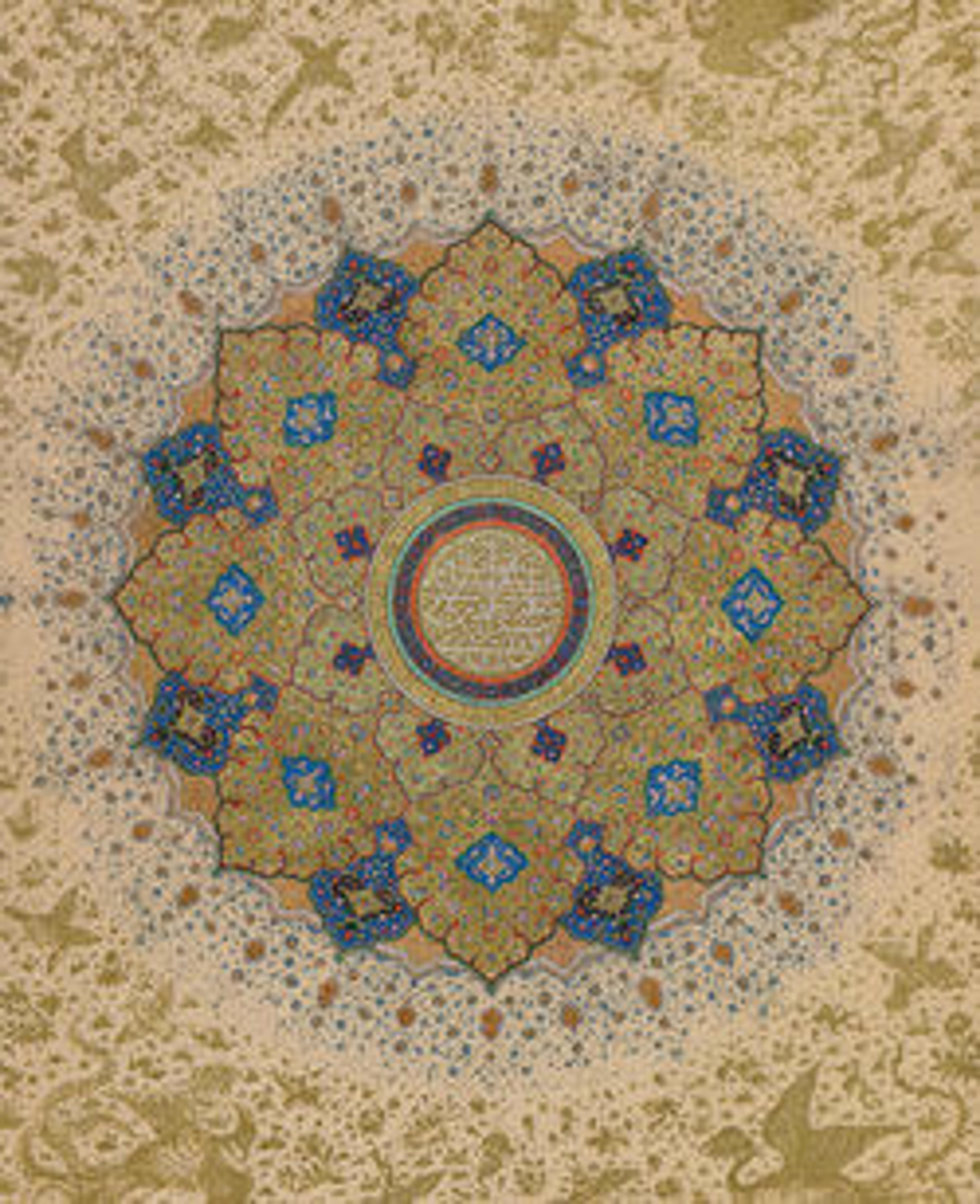Seal Ring with Inscription
This magnificent gold ring holds a jade stone engraved with religious verses known as the Nad-i 'Ali, an invocation to 'Ali ibn Abi Talib, son-in-law of the Prophet Muhammad. The text is written in mirror reverse, suggesting that the stone may once have served as a seal. Further tiny poetic inscriptions—in cartouches around the golden bezel—contain prayerlike verses, perhaps invested with apotropaic qualities, placed there to ensure the safety of its wearer.
Artwork Details
- Title: Seal Ring with Inscription
- Date: late 15th–early 16th century
- Geography: Attributed to Iran or Central Asia
- Medium: Gold, cast and chased; nephrite, carved
- Dimensions: H.1 3/8 in. (3.5 cm)
Diam. 1 in. (2.5 cm) - Classification: Jewelry
- Credit Line: Rogers Fund, 1912
- Object Number: 12.224.6
- Curatorial Department: Islamic Art
More Artwork
Research Resources
The Met provides unparalleled resources for research and welcomes an international community of students and scholars. The Met's Open Access API is where creators and researchers can connect to the The Met collection. Open Access data and public domain images are available for unrestricted commercial and noncommercial use without permission or fee.
To request images under copyright and other restrictions, please use this Image Request form.
Feedback
We continue to research and examine historical and cultural context for objects in The Met collection. If you have comments or questions about this object record, please contact us using the form below. The Museum looks forward to receiving your comments.
